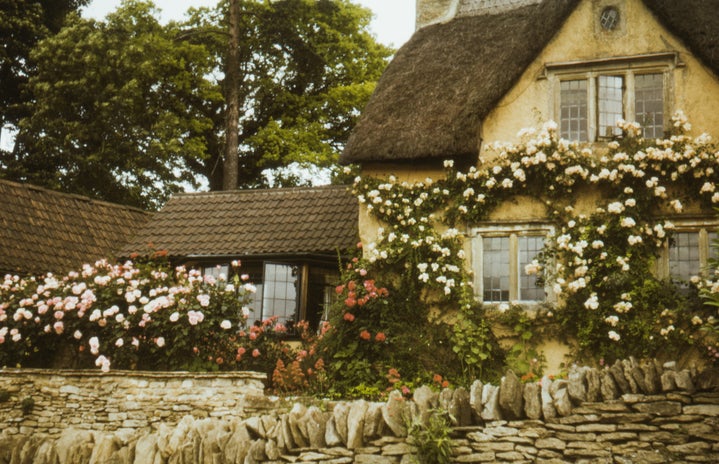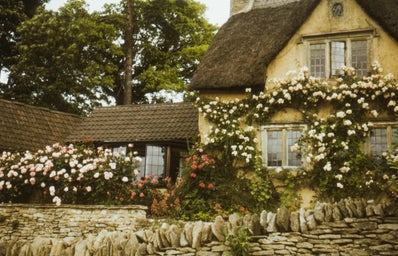When surfing on the internet, images of ivy-clad manors, candlelit kitchens, and pressed flowers can be seen every now and then – all depictions of a subculture titled ‘cottagecore’. Cottagecore is a popular aesthetic that has captivated young adults since the late 2010s as a trend on Tumblr and TikTok. As the name suggests, the movement embraces a simpler, sustainable existence that is more harmonious with nature. Although depictions are diverse, cottagecore aesthetically aligns with the traditional English countryside style.
While the trend could be seen as paradoxical considering the fast-paced, technological nature of millennial culture, it is its bucolic quality that makes it so attractive to millennials. Some common visual interpretations include picking flowers in a forested area and baking old-fashioned cakes. Such activities are appealing to the eyes and offer a small window to a bygone lifestyle that many cannot attain today, hence its popularity online. For financially stressed millennials, cottagecore embodies numerous ideals for its rejection of capitalism and perhaps most notably, its laidback lifestyle. As the “rise and grind” obsessive work culture is increasingly being scrutinized, cottagecore reflects a desire of the millennial generation for a simpler, more languid way of life. On the internet, cottagecore is often explored through photo galleries, art, and videos. Videos (especially on Instagram and Tik Tok) are typically shown as ASMR or POV, where the viewer can experience the comfort and nostalgia of quaint living. Videos such as these act as a substitute for immersing in a picturesque countryside home; ironically made possible by the advanced digital technology of today.
Another possible reason for its popularity may be its environmental value. A key feature of cottagecore is its setting and absence of technology. Photography and videos capture flower fields while in cooking scenes, electric equipment and plastic appear to be absent. With increasing consciousness of environmental degradation, cottagecore further holds appeal as an ideal environmental lifestyle. While celebrating the pleasures of manual activities, cottagecore simultaneously places emphasis on not relying on artificial materials or resources. In this sense, cottagecore does have a certain degree of advocacy for reducing waste, particularly environmentally harmful materials such as plastic.
Idealistic it may seem, this trend nevertheless carries multiple contradictions. Despite being frequently illustrated as idyllic, actual life in the countryside is quite rough and at times painstakingly busy. Consider farm life: schedules are always packed with daily tending to the animals and fields as well as maintenance for the property, leaving little time for lounging in a meadow picking flowers. Along with tough labor comes the constant struggle to make ends meet. Another point is the underlying privilege, which can usually be seen in videos of white women wearing fancy garb while idly wandering around. To some viewers, such depictions remind of upper class westerners from colonial eras who have servants to do the menial tasks. It thus explains the criticism that some images of the trend conjure a romanticised notion of western history. And as previously mentioned, the aesthetic itself paradoxically thrives on the internet, where its content is spread far and wide by online platforms.
Though cottagecore cannot necessarily be attained as a genuine lifestyle, it still holds value as an inspiration to improve the quality of everyday living. In a way, the aesthetic helps to discover and savor simple pleasures of the mundane. In addition, it also encourages taking up manual activities such as cooking, which not only serves to find new pastimes but also motivates to be active – especially important in a period such as quarantine when sluggishness becomes a prone issue. For a modern urban dweller, cottagecore is valuable in the sense that it reminds the goodness of a simple, natural way of living; a breather in a time that sometimes feels overwhelmed by hyperconnectivity and constant hustle. For a 21st century young adult confined in an urban environment, cottagecore is an escapist getaway to a time and place that provides much needed unwinding and bonding with nature.


